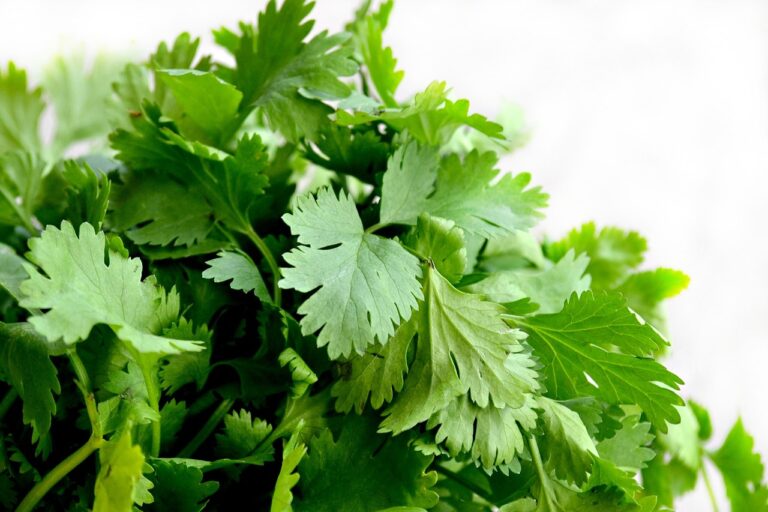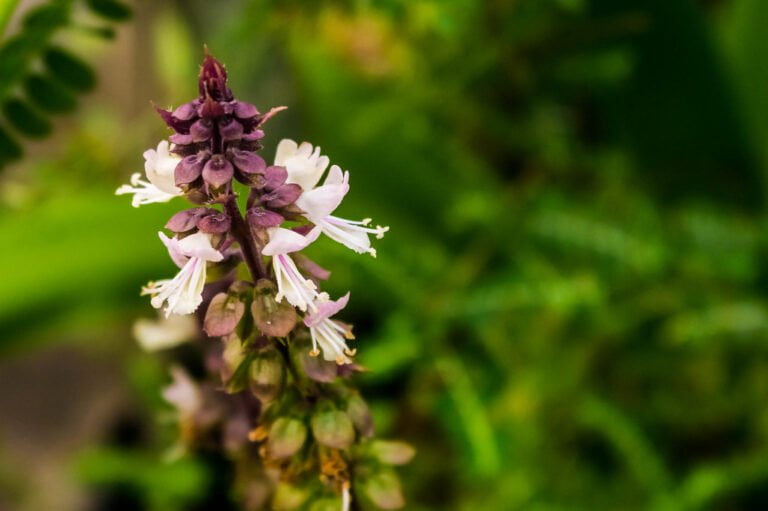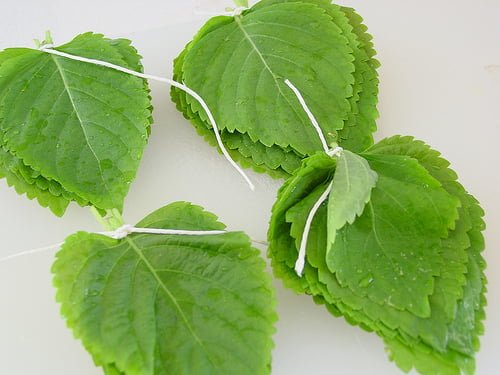Sage
Sage, a versatile herb, enriches dishes with its unique flavor profile. It pairs well with garlic, thyme, and lemon, enhancing roasted vegetables and poultry stuffings. Medicinally, sage offers antioxidants and potential memory-boosting effects. Growing well in sunny, well-drained soil, sage thrives with moderate care. Its symbolism in healing and wisdom transcends cultures. Artists and writers often depict sage for its associations with insight and balance. The world of sage is rich and deep, offering more than meets the eye.
Culinary Uses of Sage
Sage plays a crucial role in enriching the flavors of various culinary creations, adding a distinct earthy and aromatic touch to dishes. Regarding sage-infused recipes, the herb can be utilized in various cooking techniques to maximize its flavor potential. One popular method is to finely chop fresh sage leaves and mix them with softened butter to create a flavorful sage butter. This sage butter can then be used to baste meats like chicken or pork, infusing them with the herb’s essence as they cook.
Seasoning with sage opens up a world of flavor combinations. For instance, combining sage with garlic and onions creates a robust base for soups and stews. The herb also pairs exceptionally well with ingredients like lemon, thyme, and rosemary, adding depth and complexity to dishes. Sage can be used to season roasted vegetables, imparting a savory note that heightens the overall taste profile.
In traditional cooking, sage is often used in stuffings for poultry and pork, where its earthy flavor shines through and complements the richness of the meat. Its aromatic qualities make it a versatile herb that can enrich a wide range of savory dishes, from simple roasted potatoes to complex braised dishes. Sage truly is a culinary powerhouse, capable of transforming ordinary dishes into extraordinary culinary experiences.
Medicinal Benefits of Sage
I’ve always marveled at the medicinal benefits of sage. Its antioxidant and anti-inflammatory properties have been revered in herbal medicine, with studies hinting at its potential to boost cognitive function and memory. It’s fascinating to see how sage extracts are widely used in natural remedies and supplements, though seeking guidance from a healthcare professional before using sage for health reasons is always wise.
Health Benefits of Sage
With its believed antioxidant and anti-inflammatory properties, sage offers potential health benefits worth exploring. Sage tea benefits are well-known for their soothing effects on the digestive system and potential ability to reduce inflammation. Additionally, sage has been linked to cognitive improvement, making it a promising option for those interested in natural memory support. Studies suggest that compounds in sage may help boost memory retention and overall cognitive function. Incorporating sage into your daily routine, whether through teas or supplements, could potentially provide a range of health benefits. However, as with any herbal remedy, it’s crucial to seek guidance from a healthcare professional before using sage for medicinal purposes to ensure safe and appropriate usage.
Culinary Uses of Sage
Incorporating this versatile herb into various dishes adds a depth of flavor that complements poultry, pork, sausages, and other culinary creations. Sage infused recipes can range from simple dishes like sage-roasted chicken to more complex creations like butternut squash and sage risotto. When utilizing sage as a seasoning, keep in mind that its flavor can be quite potent, so a little goes a long way. To enhance its taste, try rubbing sage leaves between your fingers before adding them to a recipe to release their essential oils. Sage pairs well with ingredients like garlic, lemon, and butter, enhancing the overall taste profile of a dish. These sage seasoning tips can enhance your cooking and bring a unique savory note to your meals.
How to Grow Sage
Cultivating sage in a home garden provides not only a delightful addition to your culinary creations but also access to its valuable medicinal benefits.
- Soil Requirements, Sunlight Exposure: Sage thrives in well-draining soil and prefers full sun, making it an ideal herb for home gardens.
- Watering Frequency, Pruning Techniques: Sage requires moderate watering; allow the soil to dry out between watering sessions. Regular pruning helps maintain plant health and shape, ensuring a plentiful harvest of leaves for both culinary and medicinal purposes. Remember, proper care leads to a flourishing sage plant that can be a versatile addition to your natural remedies.
Symbolism of Sage
As I investigate the symbolism of sage, I find it intriguing how this herb is intertwined with healing properties and cultural significance. The act of burning sage for cleansing purposes and its association with wisdom and clarity in various traditions highlight its profound symbolism. The color green in sage, symbolizing growth and harmony with nature, adds another layer of depth to its symbolic meanings.
Healing Properties of Sage
With its long history of medicinal use dating back centuries, sage is revered for its healing properties and symbolic significance.
- Antioxidant and Anti-inflammatory Effects: Traditional medicine has long utilized sage for its believed antioxidant and anti-inflammatory properties, contributing to its healing reputation.
- Cognitive Improvement: Studies suggest that sage may improve cognitive function and memory, making it a valuable herb in promoting mental acuity.
- Natural Remedies: Sage extracts are commonly used in natural remedies and herbal supplements, highlighting its versatility in promoting overall well-being.
As someone who appreciates natural remedies, I find the healing properties of sage fascinating. Its use in rituals and aromatherapy further accentuates its importance in holistic wellness practices.
Cultural Significance of Sage
Sage, a herb steeped in cultural significance, embodies qualities of insight, understanding, and cleansing across diverse traditions and beliefs. In spirituality, sage holds a esteemed position symbolizing wisdom and clarity. It is often burned in rituals to purify spaces and individuals energetically, a practice commonly known as smudging. From Native American ceremonies to European folklore, sage plays a crucial role in promoting spiritual awareness and healing. The aromatic essence of sage is believed to improve mental clarity and focus, aiding in the journey of self-discovery and transformation. Its symbolic value transcends its culinary and medicinal uses, resonating with themes of intuition, guidance, and the power of renewal in various cultural contexts.
Growing Sage at Home
In well-draining soil and full sun, growing sage at home can be a rewarding and straightforward endeavor. I’ve had success with propagating sage through both cuttings and seeds, giving me the flexibility to choose the method that works best for me. Here are some essential tips for cultivating sage at home:
- Sage Propagation Techniques: Whether you opt for outdoor or indoor cultivation, starting sage plants from cuttings or seeds can kickstart your herb garden. I prefer using cuttings as they tend to establish quicker and are a vital way to propagate sage.
- Sage Companion Planting: To boost growth and repel pests, consider companion planting sage with rosemary, thyme, or lavender. These combinations not only create a visually appealing herb garden but also support each other’s growth by deterring common pests.
- Regular Pruning: Pruning sage is important for maintaining its health and shape. By trimming back the plant regularly, I’ve noticed stronger growth and more abundant foliage. It also helps prevent the plant from becoming leggy and promotes a bushier growth habit.
Sage in Different Cultures
Associated with wisdom, courage, and longevity in Greek and Roman cultures, sage holds significant cultural significance across various societies. In Native American spiritual practices, sage is revered for its cleansing properties. It is commonly used in purification rituals to cleanse spaces and individuals of negative energies, promoting a sense of balance and harmony. The act of burning sage, known as smudging, is a traditional practice that has been passed down through generations to promote healing and spiritual cleansing.
In Chinese medicine, sage is valued for its cooling properties and its ability to support digestion and respiratory health. This herb is incorporated into various remedies to aid in maintaining overall well-being. Likewise, indigenous cultures in North America perform smudging ceremonies where sage is burned to drive away negative influences and encourage positive energy flow.
In European folklore, sage is believed to possess protective qualities against evil spirits and is often used to bring good luck to homes. The symbolism of sage transcends geographical boundaries, with each culture incorporating this herb into their traditions and rituals to honor its cleansing and purifying properties. Sage continues to be a revered herb in various cultures, symbolizing wisdom, strength, and spiritual clarity.
Sage in Literature and Art
Symbolically representing wisdom and insight, sage finds a prominent place in literature and art, serving as a powerful motif for conveying profound understanding and spiritual enlightenment.
- In literature, sage characters often assume the role of wise advisors or mentors to the main protagonists. These characters embody deep knowledge and offer guidance that shapes the narrative and influences the development of other characters.
- Artists draw artistic inspiration from sage to depict themes of wisdom, knowledge, and insight in their creations. By incorporating sage imagery in their work, artists aim to evoke a sense of enlightenment and spiritual growth in the viewers, inviting them to reflect on deeper meanings within the artwork.
- The color of sage, a muted green with gray undertones, is frequently utilized in visual art to convey a feeling of tranquility and balance. This color choice adds layers of symbolism to the artwork, enhancing the overall message of wisdom and peacefulness that sage represents in both literature and art.
References to sage in literature and art date back centuries, underscoring its enduring significance as a symbol of guidance and sagacity.





